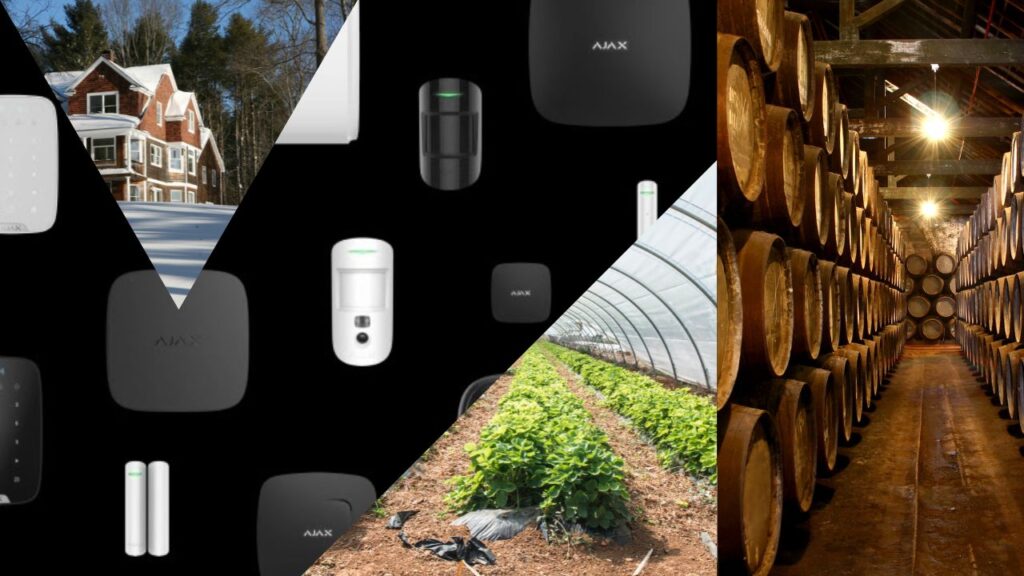Ajax devices like detectors, sirens, keypads, and many others can measure the temperature inside their enclosures. These indicators were previously used only for display. It is now possible to trigger scenarios based on device temperature. Ajax devices can be used in tandem with temperature scenarios
Users of OS Malevich 2.14 can access temperature scenarios. In order to run the scenario, you only need a system with a device that displays temperature and an automation device. Also, LifeQuality air quality monitors show temperature, humidity level, and CO2 concentration. For reliable data, LifeQuality has Swiss and Swedish sensors also used in medical devices.
How to use temperature-triggered scenarios
Keep empty properties with a minum temperature to avoid pipes and walls freezing, damage to furniture and appliances and could cause a mold. Experts advise to keep empty or rarely visited premises at a the temperature between 5°C to 8°C.
The temperature scenarios turn on the heating system if the temperature drops below +5°C and turn it off when it reaches +8°C.
Icy porches and snow on your driveway can cause serious injury. A melting system can be an alternative to the daily manual snow and ice removal. Heated floors can be installed anywhere, including walkways and outdoor stairs.
Integrating the melting system with Ajax temperature scenarios helps make the solution fully automated and energy efficient. The scenarios turn the heating on when the Ajax outdoor detectors’ temperature drops below 0°C and turn it off when the temperature is above zero again. If no precipitation is expected, it takes one click in Ajax apps to disable the scenarios.
The Ajax security system, can also solve the primary needs of the warehouse or cellar: security detectors provide reliable protection against intrusion, and scenarios automate temperature control. The LifeQuality air quality monitor gives accurate readings without deviations. The WallSwitch relay turns on the heating, ventilation, and air conditioning if the Ajax detectors’ temperature exceeds normal parameters. Scenarios in tandem with LightSwitch automate lighting according to a schedule.
Microclimate indicators for places such as greenhouses should comply with the standards and have a system that controls temperature, maintains optimal humidity levels, and controls lighting according to a schedule. It is essential to have timely notifications if the system shows critical microclimate indicators and employee assistance is required.
Ajax security detectors protect expensive production equipment, and scenarios with the WallSwitch relays automatically activate the heating, ventilation, air conditioning, irrigation, and lighting systems. Ajax apps will notify about each system event.
Here’s how it works
With the OS Malevich 2.14 update, Relay, WallSwitch, LightSwitch, Socket, Socket Plus, and WaterStop activate when the specified temperature threshold is exceeded or decreased. The temperature of one or more detectors can trigger the scenario.
The installer can provide both security and comfort with one Ajax solution. Scenarios based on LifeQuality indicators can control the microclimate in any room, giving a wide range of devices. The temperature of other Ajax devices can be used for already installed Ajax security systems to automate heating, air conditioning, and others. These scenarios are displayed separately in Ajax apps:
Create scenarios using LifeQuality indicators in the air quality monitor settings.
Configure scenarios using other Ajax devices’ temperature indicators in the automation device settings.
Temperature scenarios work with OS Malevich version 2.14 on all hubs (except the Hub model) and with the following app versions:
Ajax Security System 2.22 for iOS
Ajax Security System 2.25 for Android
Ajax PRO: Tool for Engineers 1.16 for iOS
Ajax PRO: Tool for Engineers 1.16 for Android
Ajax PRO Desktop 3.5 for macOS
Ajax PRO Desktop 3.5 for Windows


